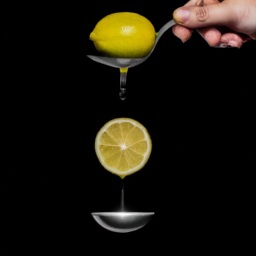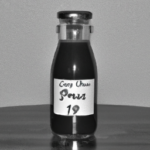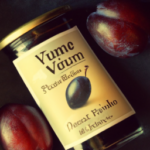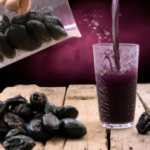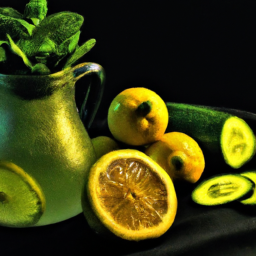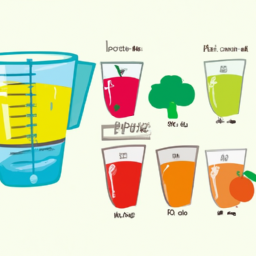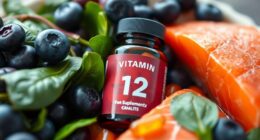I often think about the expiration date of prune juice as a fan of the drink. Since I don’t consume it daily, I often wonder how long it stays drinkable after I open the bottle.
Understanding the shelf life of prune juice is important for anyone who enjoys this drink. Prune juice is made from dried plums, which have a high sugar content. This means that once the juice is exposed to air, it can start to ferment and spoil.
However, with proper storage and handling techniques, you can extend the shelf life of prune juice and ensure that it stays fresh for longer. So, let’s dive in and find out more about how long prune juice is good for once opened.
Key Takeaways
- Prune juice can last 7-10 days in the fridge once opened
- Proper storage is important, including refrigeration at 32-40°F and keeping the juice in its original bottle or an airtight container while avoiding light and air
- Expired juice can cause adverse health effects and should not be consumed
- Storing prune juice in the freezer causes loss of nutritional value and quality, so it should not be frozen.
Understanding the Shelf Life of Prune Juice
Don’t waste your hard-earned money on expired prune juice – find out how long it stays good once opened! Prune juice is a nutritious drink that is high in fiber, vitamins, and minerals. It’s made from dried plums and is commonly used for its laxative properties.
However, once opened, prune juice begins to deteriorate, and its shelf life decreases. The shelf life of prune juice depends on several factors, such as the quality of the juice, the storage conditions, and the date of production.
On average, an opened bottle of prune juice can last up to 7-10 days in the refrigerator. However, homemade prune juice may only last for 3-5 days due to the absence of preservatives. It’s important to check the expiration date before consuming any prune juice, as expired juice can cause adverse health effects.
Proper storage techniques can also extend the shelf life of prune juice, which will be discussed in the subsequent section.
Proper Storage Techniques
To ensure optimal freshness, it’s important to store prune juice correctly. After opening the bottle, make sure to keep it refrigerated at all times. The ideal temperature for storage is between 32°F and 40°F. If the juice is exposed to higher temperatures, it may spoil faster and lose its flavor and nutritional value.
When it comes to container options, it’s best to keep the juice in its original bottle. However, if you prefer to transfer it to a different container, make sure it’s airtight and doesn’t let any light in. Exposure to air and light can cause the juice to oxidize and spoil quicker.
By following these storing tips, you can extend the shelf life of your prune juice and enjoy its benefits for a longer time.
To make sure you consume prune juice at its best quality, it’s important to check the expiration date before drinking it. Even if you have stored the juice properly, it will eventually go bad and lose its freshness. By keeping an eye on the expiration date, you can make sure that you consume the juice before it spoils.
Checking the Expiration Date
When your bottle of prune juice has reached its expiration date, it’s time to bid farewell to its once delightful taste and nutritional value. To avoid this, checking the expiration date before buying the juice is crucial. It is also important to know that once the bottle is opened, the clock starts ticking. The shelf life of prune juice depends on storage conditions, and taste changes can be a sign of spoilage.
To better understand the shelf life of prune juice, it is helpful to know how long it can be stored at different temperatures. The table below provides an overview of the recommended storage times for prune juice:
| Storage Temperature | Unopened Bottle | Opened Bottle |
|---|---|---|
| Room temperature | 12-18 months | 7-10 days |
| Refrigerated | 12-18 months | 2-3 weeks |
| Freezer | Not recommended | 6-8 months |
As you can see, storing prune juice in the refrigerator can extend its shelf life once opened. However, it is important to note that taste changes may still occur over time. In the next section, I will provide tips for extending the shelf life of prune juice.
Tips for Extending the Shelf Life of Prune Juice
You might have heard that storing prune juice in the freezer can prolong its lifespan, but unfortunately, this theory isn’t entirely true. Freezing can actually cause the juice to lose some of its nutritional value, and the quality may suffer as well.
Instead, there are several tips you can follow to extend the shelf life of your prune juice. Firstly, make sure to keep the juice refrigerated at all times. Ideally, it should be stored at a temperature between 34-40 degrees Fahrenheit.
Additionally, try to consume the juice within a week or two of opening it. If you have leftover juice, consider using it in creative recipes such as smoothies or baked goods to avoid waste.
By following these tips, you can ensure that your prune juice stays fresh and delicious for as long as possible.
When it comes to using prune juice after it has expired, there are a few steps you can take to determine if it’s still safe to consume. However, it’s important to note that consuming expired juice can be dangerous and should be avoided whenever possible.
How to Use Prune Juice after it has Expired
After its expiration date, prune juice may not be safe for consumption, but if you still have some left, it could be repurposed for non-food related uses such as a natural hair conditioner or a facial toner.
Here are some creative recipes and alternative uses for expired prune juice that could be worth considering:
- Mix prune juice with honey and olive oil to make a nourishing hair mask that can help promote hair growth and prevent dandruff.
- Use prune juice as a natural skin toner by diluting it with water and applying it to your face with a cotton ball. Prune juice is rich in antioxidants and vitamins that can help reduce inflammation and boost collagen production.
- Add prune juice to your bathwater to soothe sore muscles and improve circulation. Prune juice contains magnesium and potassium, which are essential minerals for relaxation and hydration.
While these alternative uses can be beneficial, it’s important to note that consuming expired prune juice can be harmful to your health. Instead, consider purchasing fresh prune juice or making your own at home to enjoy the many health benefits it has to offer.
Health Benefits of Prune Juice
To reap the benefits of prune juice, it’s recommended to consume it on a regular basis as part of a healthy diet. Prune juice is a good source of nutrition, containing vitamins A, C, and K, as well as potassium, iron, and fiber. These nutrients are essential for maintaining good health and preventing chronic diseases.
One of the main benefits of prune juice is its positive impact on digestive health. Prune juice is high in fiber, which helps to regulate bowel movements and prevent constipation. Additionally, the natural sugars in prune juice can help to stimulate the digestive system and promote the growth of beneficial gut bacteria.
Incorporating prune juice into your diet can be a simple and effective way to improve your overall health and well-being.
Ways to Incorporate Prune Juice into Your Diet
Looking for a tasty and easy way to boost your digestive health? Try incorporating prune juice into your diet with these simple tips! Prune juice is known for its high nutritional value, which includes being a good source of fiber, vitamins, and minerals. It also contains sorbitol, a natural laxative that can help relieve constipation.
To incorporate prune juice into your diet, consider trying these recipes:
| Recipe | Ingredients |
|---|---|
| Prune Smoothie | 1 cup prune juice 1 banana 1 cup Greek yogurt 1 tsp honey |
| Prune Energy Balls | 1 cup pitted dates 1 cup prunes 1 cup almonds 1 tbsp honey |
These recipes are simple and easy to make, and they can be a great addition to your daily diet. Not only do they provide nutritional benefits, but they are also delicious and satisfying.
When choosing the right prune juice, it’s important to look for a high-quality product that is made from 100% pure juice. Avoid brands that contain added sugars or artificial flavors, as these can negate the health benefits of prune juice. With these tips, you can easily incorporate prune juice into your diet and enjoy its many health benefits.
Choosing the Right Prune Juice
Now that we’ve discussed the different ways to incorporate prune juice into your diet, let’s talk about choosing the right prune juice. It’s important to note that not all prune juices are created equal. In fact, some brands may contain added sugar or preservatives that can negate the nutritional benefits of prune juice.
To ensure that you are getting the most out of your prune juice, consider the following factors:
-
Check the label: Look for prune juice that is 100% pure and does not contain any added sugars or preservatives.
-
Consider the brand: Some brands may have a better reputation for quality and taste than others. Do your research and read reviews before purchasing.
-
Look for organic options: Organic prune juice may be a better choice as it is made without the use of synthetic pesticides or fertilizers.
-
Consider the packaging: Prune juice that comes in glass bottles may be a better choice as it is less likely to contain harmful chemicals from plastic.
In addition to these factors, it’s important to consider the nutritional benefits of different brands. Some brands may have a higher concentration of certain nutrients, such as fiber, potassium, or vitamin C. By doing your research and choosing a high-quality prune juice, you can reap the many health benefits of this nutritious beverage.
As we move on to the next section about common myths about prune juice, it’s important to keep in mind that choosing the right prune juice is essential for maximizing its health benefits.
Common Myths about Prune Juice
Believe it or not, there are some common myths about prune juice that may be holding you back from enjoying its many benefits.
One of the most popular myths is that prune juice is only for the elderly or those with digestive problems. However, this is far from the truth as anyone can benefit from the nutritional value of prune juice. It’s high in fiber, potassium, vitamin C, and antioxidants, which makes it a great addition to any diet.
Another myth is that prune juice is high in sugar, but this isn’t entirely true. While it does contain natural sugars, it has a low glycemic index, meaning it’s absorbed slowly by the body and doesn’t cause a spike in blood sugar levels.
Prune juice has also been shown to improve digestion, promote bone health, and even aid in weight loss. So, don’t let these misconceptions hold you back from enjoying the many benefits of prune juice.
Frequently Asked Questions
Can prune juice be frozen to extend its shelf life?
Freezing prune juice can extend its shelf life, but it may affect the taste and texture. For best results, store prune juice in a cool, dry place and consume within the recommended time frame. Prune juice storage tips suggest avoiding freezing if possible.
How long does it take for prune juice to spoil if left out of the refrigerator?
At room temperature, prune juice should be consumed within 2 hours to ensure the best quality. After that, the shelf life decreases and the juice may spoil. It is recommended to refrigerate prune juice after opening to extend its shelf life.
Can prune juice be consumed past its expiration date?
Sure, why not drink expired prune juice? Who needs nutritional value and the benefits of regular consumption? Just ignore the expiration date and risk food poisoning. Or, you know, buy a fresh bottle.
Is it safe to drink prune juice if it has changed color or consistency?
If prune juice has changed color or consistency, there are potential risks associated with consuming it. It is recommended to discard it and consider alternative options. Always check for signs of spoilage before consuming any food or beverage.
Can prune juice be mixed with other beverages or should it be consumed on its own?
When it comes to prune juice mixtures, there are endless flavor combinations to explore. However, it’s important to note that certain ingredients may affect the health benefits of prune juice. Experiment with caution and stick to research-based combinations.
Conclusion
Well folks, we’ve learned quite a bit about prune juice today. From understanding its shelf life to incorporating it into our diets, we’ve covered a lot of ground.
But let me tell you, the myths surrounding prune juice are just too good to pass up.
First off, let’s address the elephant in the room: prune juice doesn’t make you poop like a rocket ship. I know, I know, it’s shocking. But the truth is, while prune juice may have some mild laxative effects, it’s not going to send you blasting off to the moon. So if you’re hoping to use prune juice as a quick fix for constipation, you might want to try some other remedies first.
Secondly, let’s dispel the notion that prune juice is only for old people. I mean, come on people, have some respect for this sweet nectar of the gods. Prune juice is a versatile and delicious beverage that can be enjoyed by people of all ages. Whether you’re sipping on it as a midday snack or using it as a mixer in your favorite cocktail, prune juice is a beverage that deserves our respect and admiration.
In all seriousness though, understanding the shelf life and proper storage of prune juice is important in order to get the most out of this nutritious drink.
So go forth, my friends, and enjoy your prune juice with confidence and knowledge.
Ilana has been a vegan for over 10 years. She originally made the switch for health reasons, but soon found herself becoming more and more passionate about the ethical and environmental implications of a vegan lifestyle. Ilana is the author of The Graceful Kitchen, a blog all about veganism. She loves to cook up delicious and nutritious vegan meals, and share her recipes with others who are interested in leading a cruelty-free life. Ilana is also a strong advocate for using whole foods as the foundation of a healthy diet, and believes that going vegan is one of the best ways to achieve this.

